Why AI Will Bring an Explosion of New Jobs
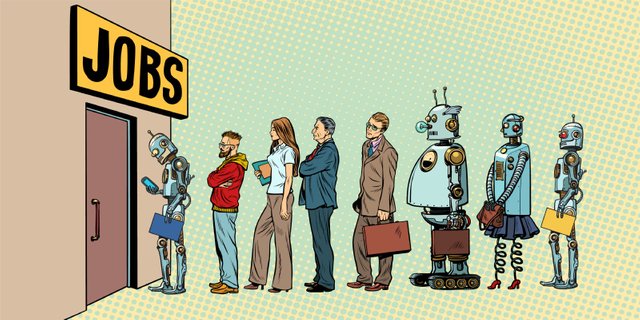
AI terrifies a lot of people.
From superintelligent puppet masters taking over the world, to fiery self-driving car crashes, to the coming age of killer machines, more and more the rise of AI seems like a chilling Black Mirror episode.
But it’s the end of all jobs that horrifies us the most.
I started writing about an AI driven jobs crash as far back as 2002 in a short story called In the Cracks of the Machine. I didn’t see self-driving cars wiping out the car industry but I imagined fast-food robots quickly displacing millions of workers. As soon as one chain adopted them, the others had no choice if they wanted to compete and it set off a chain reaction of mass unemployment and societal breakdown.
Back then the story seemed like a dim, far future possibility but as AI goes through breakthrough after breakthrough at breakneck speed it now seems sickeningly close.
A recent McKinsey Global Institute study showed 60% of all jobs could easily see 30% of their work fall to machines.
But what if we’re wrong about AI?
What if it’s not the end of work but the beginning of a massive job boom unlike anything we’ve ever seen in history?
I know. I know. This time is different.

The Bhurj Khalifa Tower in Dubai at night would fill the Stone Masons with wonder
I’m sure the loom weavers in 19th century England thought the same. So did the stone masons, whose secret knowledge of how to put together glorious temples disappeared and yet today we create even more amazing buildings that stretch up into the endless sky.
Every generation imagines that it’s radically different from the last but what if it’s not?
What if the pattern is eternal? What if the cycle of destruction and creation is not only inevitable, it’s essential?
The future is not fixed. It’s the constant interplay of trillions of variables.
Just for a moment let’s imagine a different future together.
Let’s turn off our lizard brains and peer into a future teaming with intelligent life and a surge of new jobs.
The End and the Beginning
In my article, What Will Bitcoin Look Like in Twenty Years, I wrote “prediction is a tricky business.”
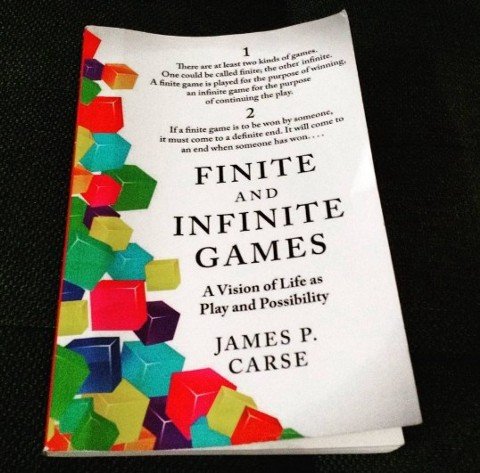
That’s because life isn’t a fixed game like Go or Chess, it’s an infinite game.
The rules and the objectives constantly shift, rewriting themselves again and again.
In other words, the very game itself changes as we play it.
We don’t know when some genius will come out of nowhere and invent the light bulb, or the steam engine, or the cotton gin, or the Internet. We can’t see any of those creations before they happen, only after the fact.
And each of those inventions change the very nature of reality around us. They change what’s possible and what’s not possible, where we can go and what we can do. And in turn, each of those things makes a million other things possible that we can’t foresee.
It’s easy to see all the jobs that might disappear but it’s much harder to imagine the kinds of jobs that AI will create for us.
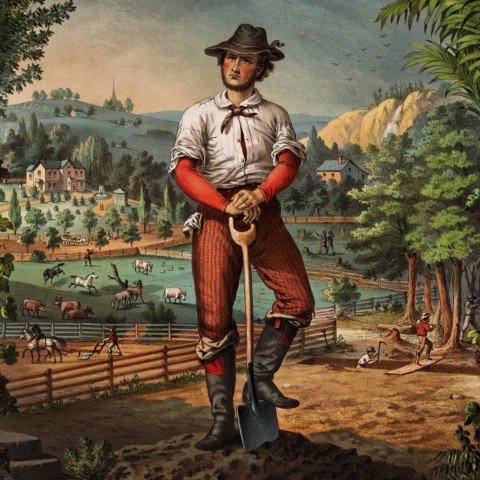
Tell me about this Internet thing again. Can I buy it with Bitcoin?
Try explaining what a web designer is to an 18th century farmer.
You can’t because it’s a job that’s built on the back of a chain of inventions, each of which depends on the one before it.
Taming electricity leads to copper wires, which leads to the electric light bulb, which leads to the computer, which leads to software, which leads to the Internet, which leads to HTML and the browser. It’s only then that a web designer job becomes possible.

Not just a pretty face, Hedy Lamarr came up with frequency hopping.
Frequency hopping, a technology that powers modern WiFi, came from trying to detect submarines with radar in the second world war devised by the divinely beautiful actress Hedy Lamarr. But it took a string of other inventions to get us to the cell phone and WiFi before the true power of frequency hopping could manifest itself.
Societies evolve layer upon layer, upon layer.
If you really think about it, all of human evolution is really nothing more than abstracting problems and automating solutions to earlier problems, which leads to new problems and new solutions in a never ending cycle.
Without an axe we can’t chop down trees. Without a hammer and nails we can’t put a complex house together.
It might not seem like it but a hammer and nails are abstraction and automation.
We wanted to abstract a way to build structures faster. Hammers and nails let us build in a more systematized and predictable way. Create lots of hammers and nails and you automate away the need to go find a bunch of mud to stick your thatch hut together in the jungle.

Once you can reliably stack more structures together, new inventions inevitably follow, like concrete. Once you have concrete you can build taller and more complex structures like the Parthenon and the magnificent temples of the ancient gods. Eventually we created new materials like steel and the giant cranes to lift them and suddenly we were building towers that stretched to the clouds.
Right now I’m writing the first draft of this article on an airplane on the way to Berlin, something totally unimaginable to peasants scratching a living from the land in the distant past. To the cave man it would look like magic.
A jumbo jet couldn’t exist without a tremendous layer cake of previously solved problems from motors, to wings, to metal alloys. It’s a marvel of abstraction and automation, a testament to the genius of human ingenuity.
Nobody reading this hunted a Water Buffalo last week, skinned it, tanned its hide, cut it and stitched it together to make their own clothes. Unless you’re a builder, you didn’t build your own house. You likely didn’t grow your own food except to add some herbs or spice from your garden. You didn’t make any of the tools you use to do your job, whether that’s a shovel or a jackhammer or the computer that glows on your desk.
You didn’t have to do any of those things because we automated the jobs of the distant past and moved up the value chain of creation.
That’s a good thing and that is what’s happening once more.
It’s just a little harder to see because each leap we make takes us to higher level of complexity and we have to evolve to meet that complexity.
Unfortunately, our grey matter needs to catch up with the speed of change. We’re still running around in the forest because millions of years of hunting and gathering taught us to fear the tiger and the serpent around every bend. We don’t have claws or fangs so we needed to plan ahead to avoid disaster.
At our most basic level we’re survival machines. We imagine terrible futures so we can avoid them.
What we fear changes over time but it’s all rooted in the same fears. Tigers and serpents morph into fairies and demons and then into weaving looms and artificial intelligence. What we really fear is the end of ourselves. Death is the demon behind all our fears, shape-shifting into new forms as society grows and changes.
The fear of Zeus killing us all with a bolt of lightning is the same as the fear of superintelligent machines slaughtering us all.
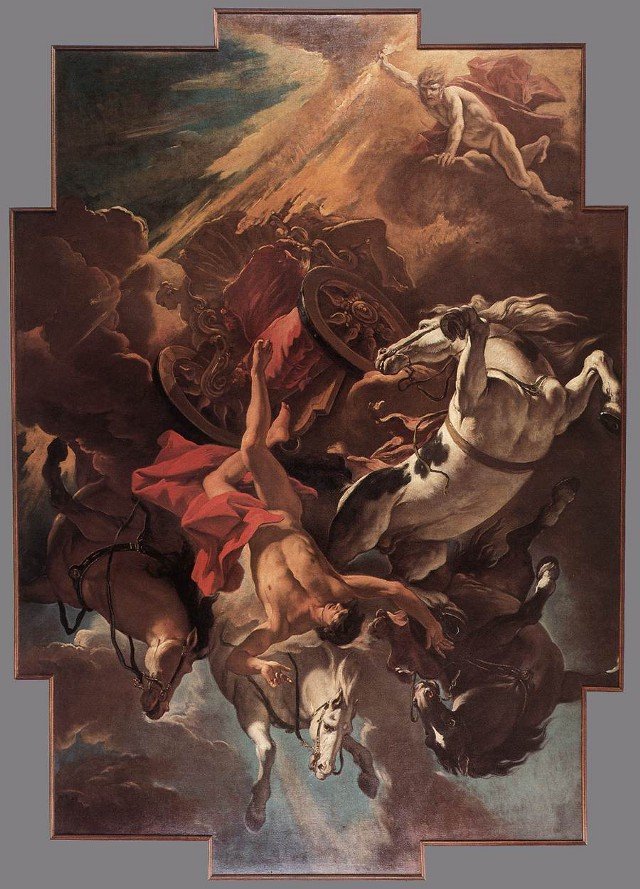
Zeus hurls a lightning bolt in Sebastiano Ricci’s Fall of Phaeton
Yet our imagination is often too binary.
Good or evil. Friend or foe. Life or death.
Our lizard brains see the world in black and white. It’s either going to kill us or feed us and there’s no in between.
But life is so much more vast and varied.
The Cambrian Explosion
We’ve already destroyed 95% of the jobs multiple times in history and we’re about to do it again.
Each and every time those jobs were replaced by a wealth of new jobs and opportunities.
Life progresses in stages.
For 1.8 million years humans were hunter gathers. Our only real problems were where to find our next meal and how to find shelter from the elements and predators. Everyone had the same job. Find food. Don’t die.
But we were slaves to the environment. If the rains didn’t fall or a drought killed off the Buffalo we died too soon so we started looking for a more consistent way to find food.
Twelve thousand years ago we solved the problem of food production with agriculture and farming and people’s jobs changed. We cultivated food, domesticating certain plants and animals so we would always have our next meal.
That destroyed all the hunter gather jobs and created a new job for humanity: farmer.
Of course that created new problems. Now that we lived so close to animals we started to die of diseases as viruses jumped from animals to our squishy little biological bodies. At first we thought it might be demons or the gods mad at us but we continued to look for better solutions, especially as hugely devastating diseases like the Black Death swept across continents slaughtering as much as 50% of the population and threatening to wipe us all out for good.
But we survived and grew stronger.
Eventually we started to discover the process by which microscopic creatures crept into our bodies and killed us as the scientific revolution took shape, giving us a view into a world we never knew existed. The first people who peered into microscopes were shocked to find every speck of dirt and drop of water teaming with life. We found ways to develop cures and preventative measures turning a once intractable problem into a technical engineering problem.
Our ancestors used to pray to the gods for a strong rain and a good crop. The slightest misstep or environmental breakdown meant entire villages or parts of the countryside starved to death and the governments at the time were powerless to feed their dying poor.
That’s what happened in the Kyoho famine in ancient Japan, as rising taxes and heavy rains damaged crops and left the population to starve while the Shogun remained powerless to help. They didn’t have the infrastructure or the means to store and distribute that food or get it from other countries. The same happened in hundreds of other famines throughout the centuries.
But over time we created stronger farming methods, ways to distribute that food, figured out that crop rotation kept the soil fresh, evolved ever more powerful pest controls and solved the problems of famine and food production.
Today famine comes almost exclusively from political breakdowns not from a sudden dry spring.

The good earth.
As we got better and better at food production people moved on to bigger and better problems.
Where once the whole of humanity were farmers now only 3% of the population work the good Earth.
That is enough to feed the entire planet multiple times over, even if we sometimes still deliberately suck at distributing that food to every mouth on the planet. The reasons are not because we can’t, it’s because we won’t or refuse to in some instances as politics break down or we get selfish.
There’s a powerful force at work here. It’s a pattern that goes back to the beginning of human history and continues up until this very day.
Each time we’ve destroyed all the jobs we’ve progressed to a new stage in our evolution with more wide and varied jobs, ever more specialized.
We haven’t created less jobs we’ve created more jobs.
Don’t get me wrong. These transitions weren’t always simple or easy. Hunter-gathers seeing villages of farmers for the first time faced a brutal choice: adapt or die. And many did die at each transition point on our long and violent path.
But despite all the horrors of human history we’ve managed to move forward, little by little, building more complex societies.
Even the dark periods are part of the process. When workers rise up against the tide of technological change, that acts as a check and balance on a society that moved just a little too fast for people to absorb. It slows the rate of change down again, course correcting and getting us back in balance.
It’s a societal level algorithm.
In many ways society is nothing but a vast, active, living, intelligent swarm working together across huge distances to create our own reality.
Welcome to the Anthropocene age, the age of man.
We became the most wildly varied and successful organism in the world by dramatically altering the face of the planet around us, working together and collaborating en masse, automating the past and building on top of that automation.
Man and his tools.The Next Revolution
In the next few decades we’ll automate away another layer of boring, tedious and mind numbing jobs and that will give us time to solve new problems once more.
AI itself will go through a series of abstractions so that it’s able to solve more complex problems. Just as we saw in the evolution of societies we’ll see the automatic evolution of novel machine learning architectures, the creation of generalized reasoning engines and the ability of machines to ask why and provide their own meaning and context to the world.
But machines will not take over the world.
No matter how smart machines get, humans are still better at certain kinds of thinking.
As we saw with Google’s search engine breakthrough machines are great at repetitive tasks and humans are great at giving meaning to the world. The combination of that understanding made Google the powerhouse it is today. They had all their servers count all the links people pointed at different topics, knowing that if enough people gave meaning to something than it probably mattered and should show up at the top of the search results.
What we’ll see instead are the rise of AI as additional members of programming teams and companies and society.
They’ll help us make better decisions and better predictions.
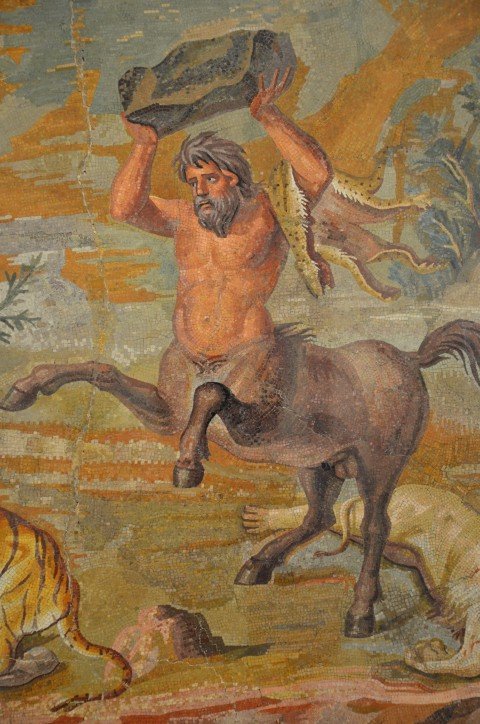
We’ll see the rise of Centaurs, humans and AI working together to solve an ever more complex series of challenges.
In fact, instead of focusing on human like artificial intelligence I expect engineers to increasingly focus on building alien intelligence. By that I mean they’ll build specialized intelligences that do the things we don’t do very well. Better to build Centaurs and augments to human intelligence rather than replacing human intelligence.
Take the case of Otto, a German retailer. Their artificial intelligence does 90% of the ordering and it does it better than an army of humans once did because it can look at millions of variables. Because of that they’ve become 1000 times more efficient. Their products fly off the shelves because the AI orders exactly what’s needed, when it’s needed, with very few mistakes. Returns are way down because people get what they want, when they want, and giant inventories of unused stuff aren’t piling up on warehouse shelves.
You might think they ended up firing a bunch of people. In fact, they hired more people but those people got to work on more interesting problems, like beautifying the website, or finding new products that people will want come Christmas time.
There are a billion other ways we could see centaur employment take off running.
How about call centers?
Unskilled works often struggle with good decision making. If you’ve ever called customer service you know just how true that is because on any given day you’re faced with someone who can’t solve your problem in any meaningful or helpful way. It’s an absolute joy to find someone on the other end of the line who can actually think and come up with a solution rather than list all the road blocks as to why your problem can’t be solved.
AI can augment the decision making process of these folks rather than outright replacing them. It can model the best and smartest folks decisions and help propagate those decisions to the rest of the team, with a dashboard of suggestions, which dynamically levels up the capabilities of the whole team, making them more responsive, more efficient and making customers happier.
But beyond centaurs let’s look at real disruption:
Self-driving cars.
Surely that’s the disruption that will see the total breakdown of society as mass unemployment sweeps the world and workers rise up and slaughter the new techno elites in an orgy of bloodthirsty violence?
Goodbye American Graffiti
Tech writers like Zack Kanter say self-driving cars could slay more than 10 million jobs by 2025. The reason is super simple. Driverless cars have built-in advantages and humans can’t compete.
In a very short time they’ll advance to the point where they dramatically surpass the crash and safety records of even the most cautious and careful drivers. Elon Musk suggests it may even become illegal for people to get behind the wheel because their accident rates will soar versus the machines.
The World Health Organization estimates that 1.25 million people die on the road every year. There’s no question that self-driving cars will do it better and safer than our spongy little mammalian brains can muster. Robotic drivers won’t get tired, won’t take their eyes off the road because they dropped something, and they won’t take wild chances when they’re drunk because they can’t get drunk.
Of course, the popular press would have you believing that self-driving cars are horribly dangerous. Unfortunately we’ve already had a few self-driving deaths but the press makes it seem like every day another Tesla or Waymo veers wildly out of control and kills a school bus of children.
It’s just not true.
We’ve seen very few autopilot deaths so far, despite self-driving cars testing on the open roads in multiple states.
The deaths were inevitable. It’s impossible to engineer all the risk out of society and out of life and frankly the technology is still new and developing.
That’s no consolation to the poor people who’ve already died at the hands of cold machines but there is little doubt that self-driving cars will quickly get better at driving than the best human drivers today.

Self-driving cars will continue to kill people but as they get smarter and smarter over the next five to ten years it’s incredibly likely they will kill a lot less people than people do today.
And that is a not a bad thing at all. 1.25 million people is a lot of people dead on the road year after year.
That is about twenty times the number of people that died in wars since 1946.
Less drivers will mean less death. Simple as that.
But that is just one of the benefits of automating driving. Even better, we will own a lot less cars.
Cars are the second most expensive asset everyone owns and the least valuable. Unlike houses or stocks or cryptos they lose money as soon as you drive off the lot and they keep losing money until one day you look them up on Kelly Blue Book and realize you can only get five thousand bucks for something that once cost you thirty grand. That’s a raw deal.
Productivity will shift away from these debt sucking assets to newer and better creations. How we own and use cars will dramatically change too.
We’ll subscribe to them and get constant upgrades or we’ll just call out to one and it will show up at our door in two minutes or less. In short order we’ll see enough robotic cars providing ride share to get rid of all the useless parking lots and that means a lot more land for doing more interesting things than paving it with concrete.
Let’s not forget pollution too.
Even with better emission standards cars are some of the worst polluters on the planet. They spray a steady stream of deadly smog and poison into the air every single second of every day. That used to be confined to the states but now the American obsession with the car has spread around the world like a virus.
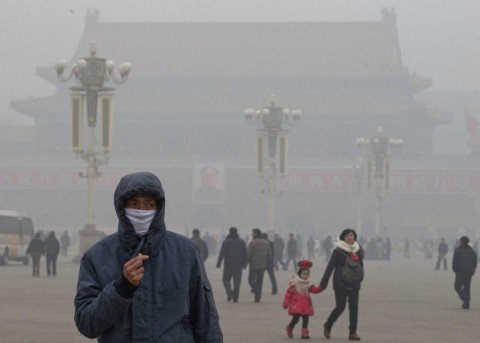
Just a normal day in Beijing, choking to death on smog.
Even China has caught car fever and with over a billion people that’s a lot of two car garages and a lot of environmental devastation looming just over the horizon. The American dream of a big house, a Big Mac and a two car garage needs to change fast or we’ll all be wearing filtration masks just to walk outside to get our packages from Amazon drone delivery in our smog filled cyberpunk wasteland.
And or course, cars were supposed to save us time, giving us the freedom of the open road but anyone who’s sat through their morning commute for a decade knows that never really worked out.
Mostly we sit idly and angrily in the early morning hours, hating life and wondering if our hunter gatherer ancestors really had it so bad wandering the forest in the bright morning sunshine, looking for delicious berries and getting a fantastic work out.
Meanwhile our legs are atrophying on the breaks and if we’re lucky we can get home early and squeeze in a crappy workout on the treadmill, running in place like a hamster.
Self-driving cars will destroy a lot of waste and pollution. It will get cars to us faster and it will save space that we can reclaim for other things as we get rid of millions of parking lots.
A lot of folks worry about what that means for all the jobs related to driving, from detailers, to body shops, to Uber.
People will do something else, like finding cool ways to upgrade those self-driving cars, or becoming a new kind of interior designer, as they trick out our new floating apartment on wheels. If we’re not paying attention to the road we need something else to do and that means video games and movies and VR and new reclining chairs.
Eventually the inside of cars will get more and more modular and we’ll see a whole new industry of constant car upgrades and the people to install them.
What Can AI Do for You?
And what about jobs we can’t do at all right now?
AI can help.
Take Google’s amazing Duplex project which they just debuted at their annual convention shows a mind-blowing new assistant that calls and sets hair appointments and makes dinner reservations, passing itself off as human easily and interacting with people who have no idea they’re talking to a machine (much to some people’s horror but that is a different story).
So what are they going to use that technology for right now?
They want to automate updating different holiday hours for restaurants.
Google gets millions of queries a day with people trying to figure out if their favorite Chinese joint is open on Easter or any of the other countless holidays we invented all over the world.
You might not think that’s a hard problem to solve but it’s very hard.
You can’t get all the restaurants to accurately update their own data because they may not have the time, not think of it, or just not care. You also can’t hire an army of people to make the calls even in a place with an absurdly cheap labor pool because it’s really a small problem without a lot of ROI if you solve it traditionally. It wouldn’t be worth the capital expenditure.
But you can have an AI make all of those calls and update the data, delivering incredibly accurate updated results on the vast majority of restaurants. Google can then sell that to other restaurant information providers like Yelp.
Suddenly a traditionally losing proposition becomes a brand new business that has to hire sales people to call Yelp and convince them to buy it.
And where there were no jobs before there are now more jobs.
Hello Personalized Medicine
The prospects of AI for medicine are the most mind-blowing of all.
We won’t see all the doctors and nurses disappearing but we will see them get much better at their jobs as AI finds its way into every aspect of the medical world.
Imagine this: You wake up in the morning and find a dark spot on your back.
What do you do?
Right now you call the doctor frantically and make an appointment. Unfortunately the doctor can’t see you for a month and half.
“That’s really his only opening?” you say with creeping panic in your voice. “This is serious. I’ve got to see the doctor fast.”
“I’m sorry,” says the nurse on the other side of the line. “That’s really the first available opening that we have.”
That lost time could make all the difference in the world for your treatment. Right now there aren’t enough doctors to scale to meet the needs of all the people in the world so we get the care we need too late or too early.
Now imagine a different scenario.
You wake up and find that dark spot but you simply point your smart phone or health wand at it and it tells you, you should call the doctor because it might be cancerous.
This time you call the doctor and it’s much faster. The AI assistant helping the nurses screen people asks to see your VizMD scan and you send it over to her. A few seconds later the machines verifies that you have a real problem and relays you to the nurse at the front of the line. She sets your appointment for that very day because the system properly prioritizes patients based on actual data, instead of guesses or the need to make sure everyone with hypochondriac disorder gets in to the see the doctor too.
AI medicine will make it easier to predict all kinds of diseases and problems before they even exist.

Your smart watch will eventually have a biomonitor built in with a hair like pin that is so small you can’t even feel it under your skin. We’ll likely even evolve to having biomonitors right inside of us as too, little pills filled with tiny nanomachines that crawl our bloodstream looking for signs of trouble.
But a watch will do just fine in between.
Your monitor will know that your glucose and triglycerides have gotten way out of balance and that your cholesterol is rising too fast.
Instead of finding out through the brute force biofeedback loop of a heart attack, your watch will nudge you to start eating more vegetables and suggest foods that can help bring any issues under control before they get out of control.
And remember those self-driving cars getting to you in two minutes or less?
Self-driving, automated ambulances or drones will get to you when you decide to ignore your watch’s gentle cajoling and keep eating a double quarter-pounder with cheese every day. The ambulance will get to you faster than ever before and it will come packed with miniaturized triage devices that will keep more people alive longer.
You probably won’t even get to a heart attack because the watch’s predictive engines will see the heart attack coming days in advance and call the hospital as a preventative measure before it ever comes to you collapsing face first into your cereal bowl.
AI will deliver brand new treatments as well.
Today’s drug discovery is a slow, tedious process of trial and error but already pharmaceutical and biotech companies are using big data and AI to suggest better drug combinations to explore.
In the not too distant future it’s not hard to see automated drug discovery machines that can rapidly combine and try different approaches in parallel, mixing chemicals, carrying out trials and tests all while the genetic algorithms running on their neural processors come up with ever better drugs through accelerated evolution.
AI will help us tailor medicine based on our genome too. You won’t get generic, one size fits all pills in the future, but ones designed and rapidly printed just for you, pills that avoid allergies and don’t give you an upset stomach because the AI knows you have the markers for both.
But what about the rise of super machines that can out-think us all?
Won’t they turn us into slaves to their brilliant mega-minds?
Superintelligence Will Kill Us All?
In short:
No.
Modern AI is still a shadow of human intelligence. It’s like a reflection in an old mirror. We give meaning to AI and it learns to ape that meaning but it doesn’t create its own meaning or ask its own questions.
Humans have the ability to adapt to new and novel situations. We do abstract reasoning. We can apply complex mental models and apply them in unique ways.
We don’t understand the algorithms floating around in our heads and the ones we have today are but pale comparisons.
We don’t even know where to start. We have absolutely no idea how our minds work.

We’re a black box.
We don’t know how we know what we know, or do what we do, or why we think what we think.
In 1970 early AI researcher Marvin Minsky famously said “In three to eight years we’ll have a machine with the general intelligence of a human being.”
That didn’t work out.
Instead AI went through a series of dark winters, where investment and enthusiasm dried up.
While the top researchers in AI make hundreds of thousands to millions of dollars now, for many years they could barely keep the lights on. One of the godfathers of neural networks, Geoffrey Hinton managed to stay afloat because one measly university in the entire world, The University of Toronto, saw the potential of AI and kept open ended funding alive despite a series of failures. They realized that real problems take a real long time to solve.
Finally, in late 2012, we saw one of the first major breakthroughs in visual recognition systems which up until then couldn’t do better than 74.6% accuracy. The change wasn’t really the algorithms themselves, it was the explosion of processing power driven by games and the rise of the Internet that gave us huge data sets to crunch. GPUs with their massively parallel architecture proved just the boost AI needed to get off the mat and start making a difference in the real world.
In essence, the video game industry subsidized the AI industry and now we’ve seen the ImageNet contest go from 74.6% accuracy in 2012 to well over 96% only a few years later. Deep learning systems were so successful that visual perception in static images is considered a solved problem.
A breakthrough like that drives massive enthusiasm and investment, as a flood of venture capital money and newly inspired programmers and data scientists swarm into a once obscure and dying field.
That’s what’s happening right now, a ton of investment and a lot of hope about breakthroughs just around the corner.
But neural networks are not brain simulators. Not even close. They will not suddenly become self-aware.
For that kind of thing we need amazing new algorithms that nobody can even imagine yet.
Here’s the thing: AI today is kind of dumb.
What is deep learning really? It’s nothing but a series of geometric transformations that map one set of data to another. That’s it. DARPA is big on AI but they dismissively called it “spreadsheets on steroids.”
Humans generate all the meaning and the AI learns to ape that meaning but it generates no meaning or understanding for itself.
It turns out we can do a lot of beautiful magic tricks with these spreadsheets on steroids like picking cats out of images and making cars drive themselves and winning the game of Go but no matter what you read in the popular press Facebook did not shut down an AI because it became too intelligent and Skynet is not coming online next week.
Facebook shut down its AI because it was a crappy, non performing algorithm that sucked at its job not because it evolved a spooky secret language that the engineers feared and needed to kill off before it was too late.
We don’t yet know all the limits of deep learning but it won’t take long to run up against them.
Progress in anything follows a sigmoid curve.
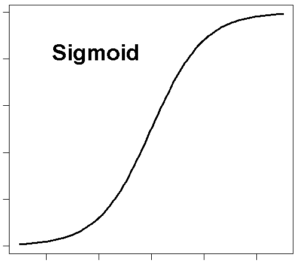
The first breakthrough is a slow and flat progression that takes many years followed by a big breakthrough that sees an explosion of interest. Once other humans know the basics of a solution it become easier for more and more of them to iterate on it. That’s why after Bitcoin figures out blockchain a thousand other cryptocurrencies can tweak the model but before Bitcoin none of them existed.
What we’re seeing now is nothing less than the vast parallel processing organism of humanity applying its real neural network to see what we can really do with deep learning.
We’re in the early part of the sigmoid curve, the exponential expansion where we see rapid and wonderful progress. Eventually though we hit a point of diminishing returns and we see fewer and fewer new apps and movement up the curve becomes painful and expensive.
We already know some of the limitations of modern machine learning.
For instance, no matter how many novels you throw at a deep learning framework it absolutely will not be able to generate a real readable book, with a killer plot twist, larger than life characters and a fantastic love story. It cannot take a new product and generate an inventive product description that perfectly captures the essence of all its new features. It can’t evolve abstract solutions to future unrelated problems.
Today’s AIs are nothing but mimics.
We have insect level intelligence. It’s stimuli and response. There is no abstract reasoning, no way to combine concepts into new and novel solutions.
As soon as you show the system something outside of its training it breaks down in completely absurd ways. Take the famous example of the AI labeling the following picture “young boy with baseball bat.”

Even a grade school kid wouldn’t make that mistake. They know a baby isn’t strong enough to hold a baseball bat.
That’s the problem really. Our systems are just boxes of statistics crunching through big data sets but they aren’t thinking at all. They have no intuitive or logical reasoning and no context and certainly no consciousness.
Some artists have even exploited this to great effect to make some performance art, like training a system to understand only fire, water and flowers and then showing it all kinds of objects so that it morphs blankets and wrinkles in motion into flowing water.
So let’s not get too down on the human mind just yet.
For all our flaws, humans are still amazing creatures.
We can anticipate different possible futures and do long term planning. We can meet with completely undiscovered phenomenon and compute it even with little to no new data.
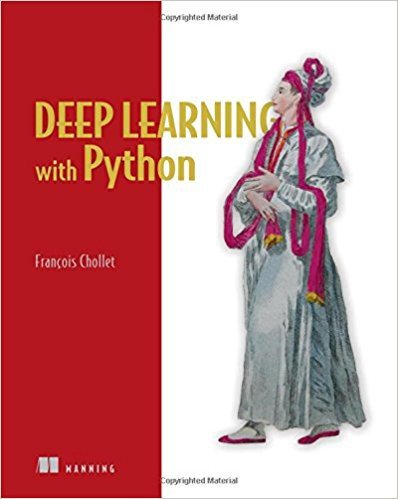
ut dim Platonic shades of ourselves.
The New Beginning
The real promise of AI is automating away boring work and freeing us up for better jobs.
And it’s also about doing the work we can’t do that well in the first place.
AI will change every aspect of society. There won’t be a single job untouched by it over the next decade.
AI will become our interface of the world.
We’ll talk to it, play with it and work with it. It will even become our friend and our companion. Think Judy Jetson talking to her robotic floating diary DiDi in the classic TV series.

Judy talks to her diary robot, DiDi.
There’s an episode of Star Trek where Scotty goes back in time and needs to find a computer to reach the ship. He bursts into an old computer store and stands perplexed in front of the mouse and keyboard. He picks up the mouse and talks into it:
“Hello, computer.”
Today’s computers will quickly look like cave man tools as AI gets more and more ubiquitous. We’ll talk with machines, work alongside them and they’ll help us create bigger and more complex societies and solve problems we can only dream of solving now.
In the end, we will lose some jobs. No question.
It might even get nasty. In the worst case scenario we end up with the kind of economic slow down that leads to more crazy bastards coming to power and screwing the very people they’re pretending to help, which leads to war and people dying.
More wars are caused by economics than anything else in history.
We’ll also have to do a much better job of helping people who lose their jobs and can’t adapt fast enough to feed their families, whether that is with a Universal Basic Income (UBI) or better education and training or all of the above plus things we can’t even think of right now.
And yet even if we have to go through the darkest hour, on the other side is the light and when we come out of the storm we’ll live in a society vastly more stable and filled with a fantastic wealth of new jobs we can just barely imagine today.
In the end, we’ll find a way through the storm.
That’s what makes humans special. We always find a way.
Necessity is the mother of invention.
She won’t abandon us now when we need her most.
###########################################
I’ve got a new podcast, The Daily PostHuman, covering crypto, AI, tech, the future, history, society and more! Check it out for expanded coverage of my most famous articles and ideas. Get on the RSS feed and never miss an episode and stay tuned for some very special guests in the next few months!
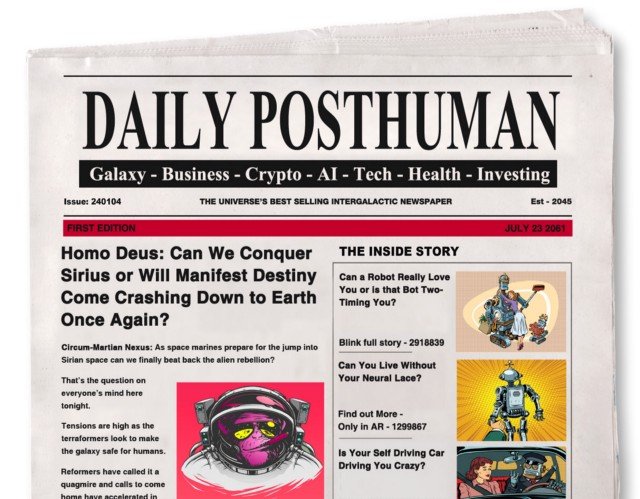
###########################################
If you love my work please visit my Patreon page because that’s where I share special insights with all my fans.
Top Patrons get EXCLUSIVE ACCESS to so many things:
Early links to every article, podcast and private talk. You read it and hear first before anyone else!
A monthly virtual meet up and Q&A with me. Ask me anything and I’ll answer. I also share everything I’m working on and give you a behind the scenes look at my process.
Access to the legendary Coin Sheets Discord where you’ll find:
Market calls from me and other pro technical analysis masters.
The Coin’bassaders only private chat.
The private Turtle Beach channel, where coders share various versions of the Crypto Turtle Trader strategy and other signals and trading software.
Behind the scenes look at how I and other pros interpret the market.
############################################
You can also stop by DecStack, the Virtual Co-Working Spot for CryptoCurrency and Decentralized App Projects, where you can rub elbows with multiple projects. It’s totally free forever. Just come on in and socialize, work together, share code and ideas. Make your ideas better through feedback. Find new friends. Meet your new family.
############################################
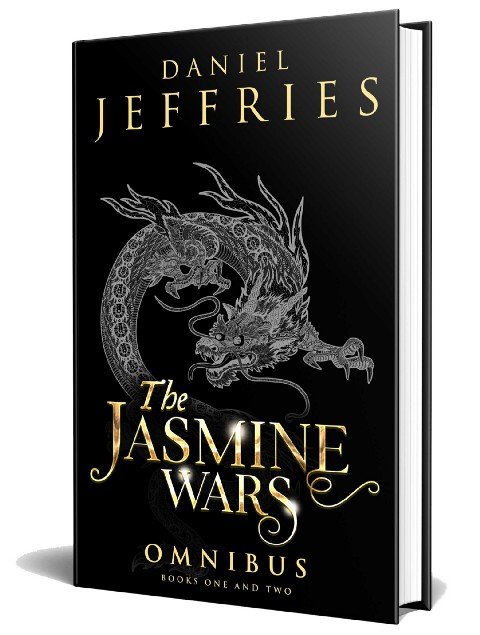
A bit about me: I’m an author, engineer and serial entrepreneur. During the last two decades, I’ve covered a broad range of tech from Linux to virtualization and containers.
You can check out my latest novel, an epic Chinese sci-fi civil war saga where China throws off the chains of communism and becomes the world’s first direct democracy, running a highly advanced, artificially intelligent decentralized app platform with no leaders.
You can get a FREE copy of my first novel, The Scorpion Game, when you join my Readers Group. Readers have called it “the first serious competition to Neuromancer” and “Detective noir meets Johnny Mnemonic.”
############################################
Lastly, you can join my private Facebook group, the Nanopunk Posthuman Assassins, where we discuss all things tech, sci-fi, fantasy and more.
############################################